
The Breed History
The Bluetick Coonhound's color suggests that it descended from
the Grand Bleu de Gascogne (French Staghound) as well as the
English Foxhound. In America, Blueticks were referred to as English
Coonhounds for many years. In 1945, however, Bluetick breeders
broke away from the English breeders because they didn't want
to follow the trend toward producing a hot-nosed, faster hunter.
Proud of their larger, cold-nosed and resolute, if slower hounds,
they re-named their breed and maintained their own hunting style.
AKC recognition occurred in 2009.
Breeding for Function
An intelligent, cold-nosed hunter that trees hard and long, the
Bluetick has the ability and endurance to stay on the most intricate
track. He is a free tonguer on the trail with a medium bawl or bugle
voice when striking and trailing. This changes to a steady chop
when running and a steady course chop at tree.
Physical Characteristics
Height at withers: males, 22 to 27 inches (56-69 cm), females, 21
to 25 inches (53-64 cm).
Weight: males 55 to 80 pounds (25-36 kg), females 45 to 65
pounds (20.5-29.5 kg).
Coat: Medium coarse and lying close to the body, appearing
smooth and glossy. Not rough or too short. Preferred color is a dark
blue, thickly mottled body, spotted by various shaped black spots on
back, ears and sides. Preference is to more blue than black on body.
Head and ears predominately black. With or without tan markings
(over eyes, on cheeks, chest and below tail) and red ticking on feet
and lower legs.
Longevity: 11 to 12 years.
Points of Conformation: Proportion is square, or slightly longer
than tall. The head is 8 to 10 inches long with a prominent stop.
The eyes are round and dark brown in color. The ears are set low.
The nose is black and large. The neck is muscular, and carried up,
with only a slight dewlap. The body should be deep, forechest
is moderate, the topline slopes downward slightly from withers
to hips. Forelegs are straight from elbows to feet. Rear legs are
muscular, and parallel from hip to foot when viewed from behind.
Feet are round and well arched. The tail is set slightly below the line
of the back, carried high with a forward half-moon curve.
Recognized Behavior Issues and Traits
Reported breed traits include: Friendly, though some individuals are
reserved, watchful, and obedient. Noted to be very intelligent, with
an independent streak, and when off leash, need to be restricted to
a fenced enclosure. They have high exercise needs, though exhibit
low activity levels around the home. They need to be socialized to
children and other pets early, and may see small pets as prey. Can
have a tendency to being dog aggressive. Blueticks have the typical
coonhound "bawling" bark.
Low grooming needs, and a high drooling tendency also characterizes
the breed.
Normal Physiologic Variations
None reported
Drug Sensitivities
None reported
Inherited Diseases
Hip Dysplasia: Polygenically inherited trait causing degenerative
joint disease and hip arthritis. OFA reports 15.8% affected, but
too few Bluetick Coonhounds have been evaluated for statistical
confidence.
Elbow Dysplasia: Polygenically inherited trait causing elbow
arthritis. Too few Bluetick Coonhounds have been screened by OFA
to determine an accurate frequency.
Patella Luxation: Polygenically inherited laxity of patellar
ligaments, causing luxation, lameness, and later degenerative joint
disease. Treat surgically if causing clinical signs. Reported as a breed
issue, however too few Bluetick Coonhounds have been screened by
OFA to determine an accurate frequency.
Disease Predispositions
Hypothyroidism: Inherited autoimmune thyroiditis. Not enough
samples have been submitted for thyroid auto-antibodies to
Michigan State University to determine an accurate frequency. (Ave.
for all breeds is 7.5%).
Coonhound Paralysis (polyradiculoneuritis): Disorder of acute
paralysis due to transient demyelination, similar to Guillain-BarrР№
syndrome. Caused by exposure to raccoon saliva in genetically
susceptible dogs. Affected dogs can recover, but must be supported
during remyelinization.
Inherited Ocular Disorders: Too few Bluetick Coonhounds have
been CERF examined by veterinary ophthalmologists to determine
an accurate frequency of inherited ocular disorders.
Cataracts, Gastric Dilitation-Volvulus, and Hock Luxation are
reported.
Isolated Case Studies
Globoid Cell Leukodystrophy (Krabbe disease): An autosomal
recessive lysosomal storage disease causing severe neurological
symptoms including seizures, hypotonia, blindness, and death in
young affected dogs. Three affected males were identified in a litter
of Bluetick Coonhounds.
Genetic Tests
Tests of Genotype: None
Tests of Phenotype: Recommend hip and elbow radiographs, CERF
eye examination, thyroid profile including autoantibodies, cardiac
examination, and patella evaluation.
Miscellaneous
- Breed name synonyms: Bluetick
- Registries: AKC, UKC, CKC, ANKC (Australian National Kennel
Club), NKC (National Kennel Club)
- AKC rank: (none) AKC recognized in Dec. 2009. Entire stud book
entered.
- Internet resources: American Bluetick Hound Association:
www.akc.org/akc_clubs/?AmericanBluetickHoundAssociation
Bluetick Coonhound Breeders of America:
www.bluetickbreedersofamerica.com
Photo Gallery of Breed - Bluetick Coonhound - Dog Breed
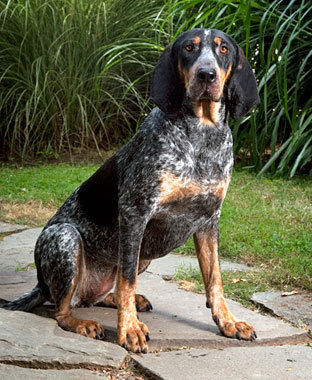


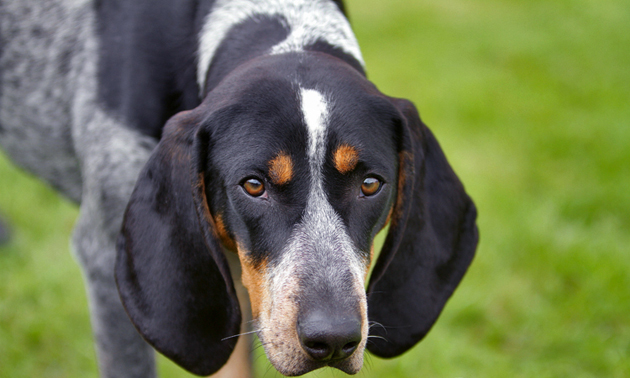
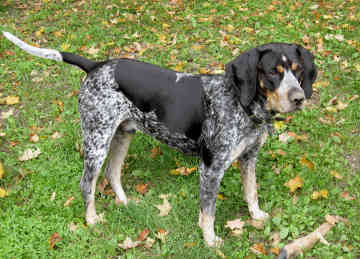

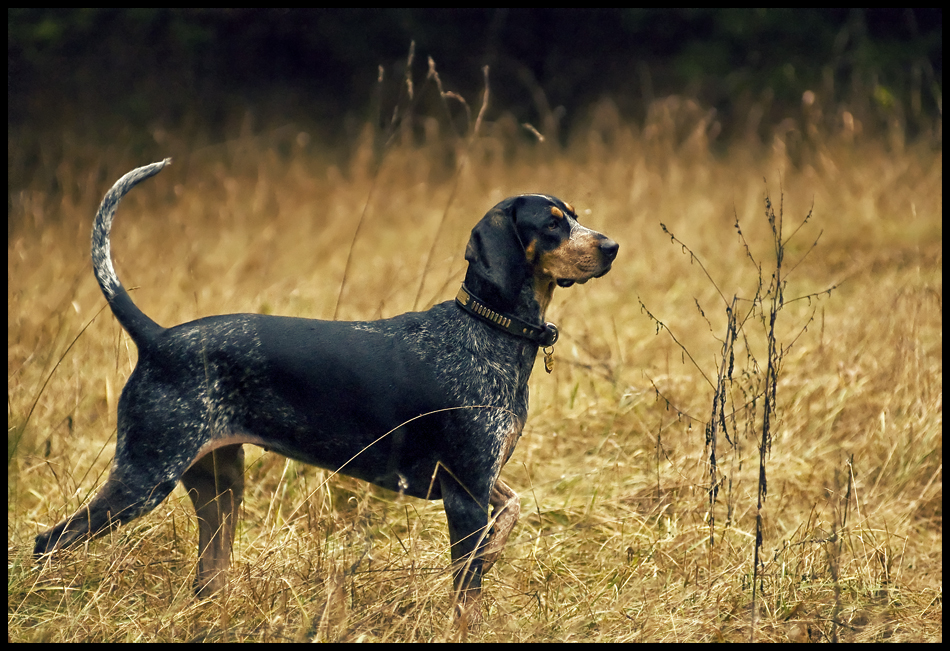
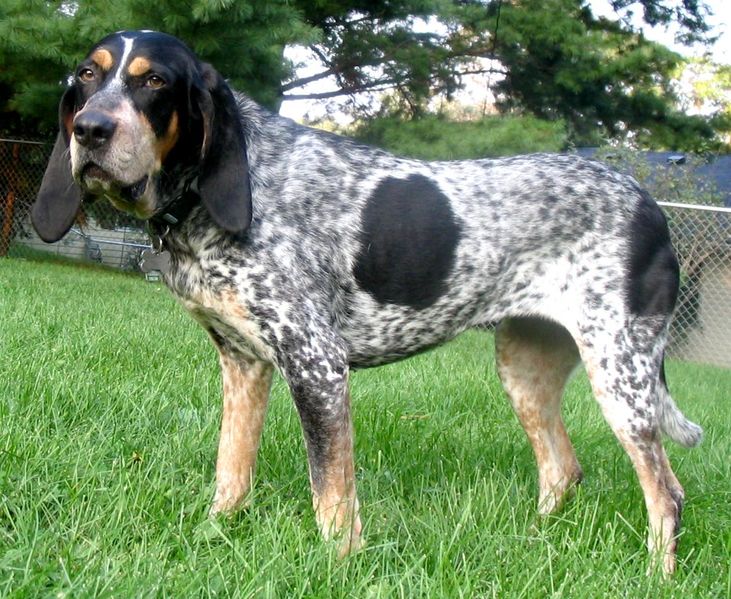
 Animalia Life
Animalia Life